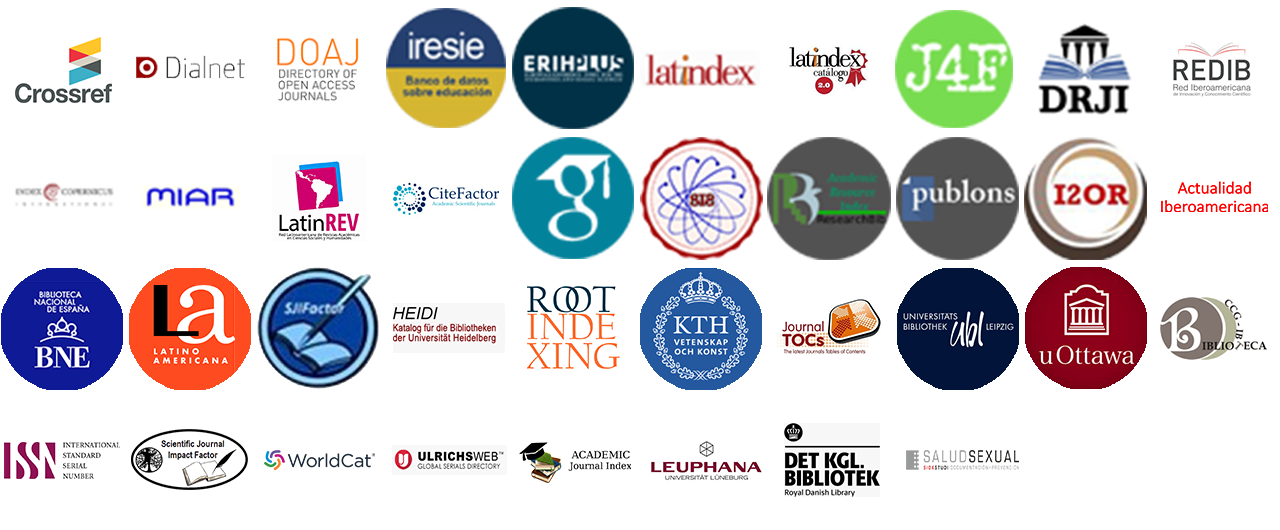Reading prediction in a standard instrument for a metrology company through a dashboard using regression algorithms
DOI:
https://doi.org/10.36825/RITI.12.27.004Keywords:
Web Application, Prediction, Metrology, Regression AlgorithmsAbstract
Nowadays, metrology has employed advanced techniques such as artificial intelligence, the internet of things and data analysis, all with the aim of accurately and precisely measuring different physical magnitudes. All this is known today as metrology 4.0, which has as its main objective to ensure the reliability and accuracy of measurements in fields such as industry. In this context, a web application is proposed for a company dedicated to the calibration of instruments, in which regression algorithms are applied for prediction in their calibration instruments. This will not only provide better quality and more reliable results to customers, but will also optimize the company's processes and improve the efficiency of decision making related to instrument calibration. It is expected that, through the use of regression algorithms, the company will predict when the standard instrument will give bad readings. This will make it possible to send the instrument for calibration in advance, avoiding errors and guaranteeing measurement accuracy. Although concrete results are not yet available, a significant improvement in the accuracy and reliability of predictions is anticipated, as well as in the company's operational efficiency.
References
JCGM. (2020). Guide to the expression of uncertainty in measurement-Part 6: Developing and using measurement models. https://www.bipm.org/documents/20126/2071204/JCGM_GUM_6_2020.pdf
Cifuentes Linares, I. C. (2023). Desarrollo de dashboard para la gestión de operaciones de la dirección de calidad de Postobón S.A. [Tesis de Grado]. Universidad de Antioquia, Colombia. https://hdl.handle.net/10495/33326
De la Fuente Ruiz, S. (2019). Implantación, estudio y control de calidad de variables climáticas en el ámbito de la metrología 4.0 [Tesis de Grado]. Universidad de Valladolid. http://uvadoc.uva.es/handle/10324/37849
Alberto, A., S., Jacob, F. L. (2019).The teaching of metrology: The genesis and the epilogue of a degree. ACM Seventh International Conference on Technological Ecosystems for Enhancing Multiculturality, León España. https://doi.org/10.1145/3362789.336285
Suakanto, S., Supangkat, S. H., Suhardi, Saragih, R. (2013). Smart city dashboard for integrating various data of sensor networks. IEEE International Conference on ICT for Smart Society, Jakarta, Indonesia. https://doi.org/10.1109/ICTSS.2013.6588063
Vargas Cuervo, D. F. (2019). Diseño e implementación de dashboards para la visualización de clústeres agregados de regiones geográficas [Tesis de Grado]. Universidad del Bosque, Bogotá, D. C. https://hdl.handle.net/20.500.12495/6034
Sandoval, L. J. (2018).Algoritmos de aprendizaje automático para análisis y predicción de datos. Revista Tecnológica, (11), 36-40. http://www.redicces.org.sv/jspui/bitstream/10972/3626/1/Art6_RT2018.pdf
Gabriel D’angiolo, F., Kwist, I. F., Loiseau, M., Contreras, D., E., Asteasuain, F. (2019). Algoritmos de Regresión Lineal aplicados al mantenimiento de un Datacenter. XXV Congreso Argentino de Ciencias de la Computación (CACIC), Córdoba, Argentina. https://sedici.unlp.edu.ar/handle/10915/91401
Prashant. (2024). Different Types of Regression Models. https://www.analyticsvidhya.com/blog/2022/01/different-types-of-regression-models/#
Breiman, L., Friedman, J., Stone, C. J., Olshen, R. A. (1984). Classification and Regression Trees. Taylor & Francis.
Microsoft. (2024). Patrón MVC de ASP.NET | .NET. https://dotnet.microsoft.com/es-es/apps/aspnet/mvc
Trueba Espinosa, A., Camarena Sagredo, J. G., Martínez Reyes, M., López García, M. L. (2012). Automatización de la codificación del patrón modelo vista controlador (MVC) en proyectos orientados a la Web. CIENCIA ergo-sum, 19 (3), 239-250. https://dialnet.unirioja.es/servlet/articulo?codigo=5199006
Qian, Z., Kavvos, G. A., Birkedal, L. (2021). Client-server sessions in linear logic. Proceedings of the ACM on Programming Languages, 5 (62), 1-31. https://doi.org/10.1145/3473567
OA.mg. (2006). Pattern Recognition and Machine Learning. https://oa.mg/work/10.1007/978-0-387-45528-0
scikit-learn (2024). 3.4. Metrics and scoring: quantifying the quality of predictions. https://scikit-learn.org/stable/modules/model_evaluation.html#regression-metrics
Hyndman, R. J., Koehler, A. B. (2006). Another look at measures of forecast accuracy. International Journal Forecast, 22 (4), 679–688. https://doi.org/10.1016/j.ijforecast.2006.03.001
SciPy. (2024). scipy.stats.zscore — SciPy v1.13.0 Manual. https://docs.scipy.org/doc/scipy/reference/generated/scipy.stats.zscore.html
Published
How to Cite
Issue
Section
License
Copyright (c) 2024 Revista de Investigación en Tecnologías de la Información

This work is licensed under a Creative Commons Attribution-NonCommercial 4.0 International License.
Esta revista proporciona un acceso abierto a su contenido, basado en el principio de que ofrecer al público un acceso libre a las investigaciones ayuda a un mayor intercambio global del conocimiento.
El texto publicado en la Revista de Investigación en Tecnologías de la Información (RITI) se distribuye bajo la licencia Creative Commons (CC BY-NC
 ), que permite a terceros utilizar lo publicado citando a los autores del trabajo y a RITI, pero sin hacer uso del material con propósitos comerciales.
), que permite a terceros utilizar lo publicado citando a los autores del trabajo y a RITI, pero sin hacer uso del material con propósitos comerciales.



